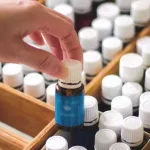Hey there! If you’ve just been prescribed Sovaldi for hepatitis C, you’re probably buzzing with questions about what comes next. Will you feel a little off? Will you need to keep an eye on any scary symptoms? The good news is that most people experience only mild, short‑lived side effects, and there are plenty of practical ways to keep them in check. Let’s walk through the most common hiccups, the rarer red‑flags, and how you can stay comfortable while you chase that virus‑free future.
Quick Overview Guide
What is Sovaldi? It’s the brand name for sofosbuvir, an oral antiviral that blocks the hepatitis C virus (HCV) from replicating. In the world of hepatitis C treatment, Sovaldi is a real game‑changer, often used as part of a combination regimen to deliver cure rates north of 90 %.
Why does it matter what side effects you might feel? Knowing the “what” lets you act fast on the “when.” A quick peek at the typical landscape can save you from unnecessary worry—and from missing a serious warning sign.
| Category | Typical Frequency | Examples |
|---|---|---|
| Common | 30‑45 % | Fatigue, headache, nausea, insomnia, mild anemia, diarrhea |
| Less Common | 5‑15 % | Rash, decreased appetite, mouth ulcers, mild joint pain |
| Serious (Red‑Flag) | Less than 1 % | Chest pain, shortness of breath, severe depression, low blood‑cell counts |
These numbers come from the latest prescribing information and the detailed review on Drugs.com. Remember, percentages are a guide—your personal experience could be a little different, and that’s perfectly okay.
Common Side Effects
What you’ll probably notice
Most folks on Sovaldi report feeling a bit more tired than usual. Think “I could nap after a short walk” rather than “I’m collapsed on the couch.” Headaches are also fairly common, often a dull pressure that eases with a glass of water or a gentle over‑the‑counter pain reliever.
Nausea can pop up early in the treatment, especially if you take the tablet on an empty stomach. A simple trick? Pop the pill with a balanced breakfast—something with protein, a little healthy fat, and a splash of fruit juice. Your stomach will thank you.
Insomnia may sneak in, particularly if you’re already a night‑owl. The bright screen before bedtime can make it worse, so try a calming routine: dim the lights, read a physical book, or try a short breathing exercise.
And then there’s mild anemia—usually showing up as a slight paleness or feeling a bit “off” when you climb a flight of stairs. While it’s unlikely to need a blood transfusion, it’s good to let your doctor know if you notice it persisting for more than a couple of weeks.
How to ease the common bumps
- Hydration is your best friend. Aim for 8‑10 glasses of water a day; it helps flush out minor toxins that can worsen fatigue.
- Snack smart. Small, frequent meals—think yogurt with berries or a handful of nuts—keep blood sugar steady and may blunt nausea.
- Sleep hygiene. Keep your bedroom cool, dark, and screen‑free. A short, guided meditation can calm a racing mind.
- Move a little. Light stretching or a 10‑minute walk can boost energy and improve mood without overtaxing your body.
These adjustments aren’t just feel‑good; they’re grounded in data from clinical practice. A study cited on RxList found that patients who maintained good hydration reported fewer fatigue episodes.
Mild Side Effects
Those “just‑a‑bit‑odd” symptoms
Some people notice a drop in appetite, a mild rash, or a few mouth sores. These signs rarely require stopping the medication, but they can be uncomfortable.
Decreased appetite? Try a nutrient‑dense smoothie—spinach, banana, a scoop of protein powder, and a dash of almond butter. It’s easy to sip and still get calories.
Rash itching? A cool compress or a fragrance‑free moisturizer can calm the skin. If the rash spreads or becomes painful, a short call to your clinic is wise.
Mouth ulcers? Rinsing with a bland salt‑water solution (½ tsp salt in a cup of warm water) a few times daily can promote healing. Soft foods and avoiding acidic drinks also help.
Simple fixes that work
- Stay cool—heat can aggravate rash.
- Chew sugar‑free gum to stimulate saliva, easing mouth soreness.
- Keep a food diary for a week; you might spot a trigger that makes the rash flare.
Serious Side Effects
Red‑flag symptoms that need urgent care
While rare, a handful of side effects signal that you should call 911 or head straight to the emergency department:
- Chest pain or pressure that doesn’t go away.
- Sudden shortness of breath or difficulty breathing.
- Fast, irregular, or unusually slow heartbeat.
- Severe depression, thoughts of self‑harm, or noticeable mood swings.
- Pale skin, unexplained bruising, or bleeding that lasts longer than a few minutes.
- High fever with chills, especially if you also notice a rash.
These signs can indicate serious complications like cardiac events, severe anemia, or psychiatric crisis. According to the FDA’s boxed warning for Sovaldi, the agency urges immediate medical attention if any of these arise.
Distinguishing serious from mild
Think of the difference like a traffic light. A steady amber (e.g., mild fatigue) tells you to proceed with caution and maybe adjust your speed. A flashing red (e.g., chest pain) means stop and seek professional help right away.
If a symptom feels “just a little off” but lasts more than a week, call your provider. If it’s intense, spreads quickly, or you feel panic, treat it as a red flashing‑red scenario.
Managing Sovaldi Side Effects
Lifestyle and self‑care tips
Here’s a quick cheat‑sheet you can keep on your nightstand:
- Food:** Focus on balanced meals—lean protein, whole grains, and plenty of vegetables. Avoid heavy, greasy foods that can worsen nausea.
- Hydration:** Aim for at least 2 L of fluid daily; herbal teas count, too.
- Exercise:** Light activity (yoga, walking) keeps circulation moving without overdoing it.
- Stress‑relief:** 5‑minute breathing—inhale for 4 seconds, hold 4, exhale 4—can lower anxiety and improve sleep.
When medication adjustments might help
Sometimes, the right supportive drug can make all the difference. Your doctor may suggest an anti‑nausea prescription (like ondansetron) or a short‑term sleep aid if insomnia lingers. Never add over‑the‑counter remedies without checking first—Sovaldi interacts with several medicines, including:
- Rifampin, rifabutin, rifapentine
- Carbamazepine and phenytoin
- St. John’s Wort
- Tipranavir
According to Drugs.com’s interaction checker, these can lower Sovaldi’s blood levels, potentially compromising efficacy. Always run a quick check before starting a new supplement.
Tracking your journey
Consider writing a “Side‑Effect Tracker.” List the date, symptom, severity (1‑10), and any actions you tried. Over a few weeks you’ll see patterns—maybe a certain food triggers nausea, or a bedtime routine eases insomnia. Sharing this tracker with your doctor can lead to tailored advice and faster relief.
When to Call Your Doctor
We all love taking charge of our health, but a few moments call for professional guidance. Give your clinician a ring if:
- Any red‑flag symptom appears, however mild it seems at first.
- Mild symptoms persist beyond 7 days or worsen.
- You miss a dose and aren’t sure what to do next.
- You’re considering any over‑the‑counter remedy or supplement.
- You have questions about pregnancy, breastfeeding, or other medications you’re taking.
Having a short, 2‑minute checklist on hand makes the call less stressful for both you and your provider.
Sovaldi in the Bigger Picture of Hepatitis C Treatment
Sovaldi isn’t the only star on the hepatitis C stage. Other direct‑acting antivirals (DAAs) like Harvoni or Epclusa share similar cure rates, but each has its own side‑effect fingerprint.
When doctors decide which regimen suits you best, they weigh factors like liver function, previous treatment history, and potential drug interactions. If you’re already on another medication that clashes with Sovaldi, an alternative might be a better fit. The 2024 AASLD/IDSA hepatitis C guidance discusses these nuances in depth, emphasizing personalized therapy.
That said, Sovaldi’s once‑daily dosing and high efficacy keep it a top choice for many patients—provided you’re prepared for the side‑effect possibilities we’ve covered.
Bottom Line & Next Steps
Sovaldi can bring you one step closer to beating hepatitis C, but like any powerful medication, it may bring a few bumps along the road. Most of those bumps are gentle—fatigue, headache, a bit of nausea—that you can smooth out with hydration, smart meals, and a dash of self‑care. The rarer, serious bumps—chest pain, severe depression, sudden shortness of breath—are your cue to act fast and seek help.
Take charge by tracking symptoms, talking openly with your doctor, and remembering that you’re not alone—many have walked this path and emerged virus‑free and stronger.
We’d love to hear from you: What side‑effect tricks have worked for you? If you’re starting Sovaldi soon, what concerns you most? Drop a comment, share your story, or ask a question below. And if you found this guide helpful, consider signing up for our newsletter for more liver‑health tips and patient‑focused resources.


















Leave a Reply
You must be logged in to post a comment.